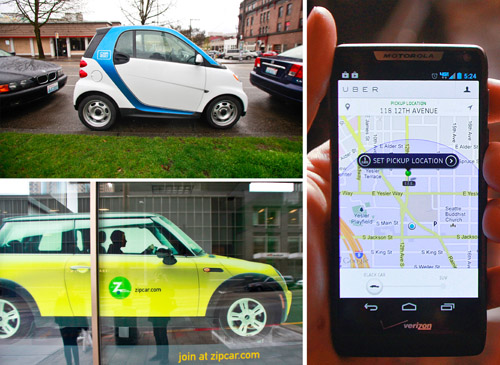Thanks to Seattle University’s convenient location in the heart of Seattle, there are a variety of options for getting around off campus.
Zipcar and Car2Go are options for students who need to borrow a car, the bus system provides routes to most neighborhoods in Seattle and beyond, and of course biking or walking are always options for students who don’t mind a little exericise.
Seattle U has made renting a Zipcar easy for students who live on campus. According to information found on the Seattle U website, one Zipcar is always parked outside the Murphy garage for student use. Rates run at about seven dollars per hour and cover the cost of gas. Seattle U students are also allowed a discounted fee of $25 a year for membership.
Despite the convenience that Zipcar provides, few students use Zipcar services. According to Associate Director of Public Safety Craig Birklid, ORCA cards and metro transit are the most popular form of transportation for students. The main reason for limited student use of Zipcars is probably the age limit; a Zipcar membership is limited to students over the age of 21.
Car2Go membership is available to students 18 and older, but the dramatic cost difference between busing and driving seems to encourage students to choose the bus.
“The ORCA card is $100 per quarter, and it’s very, very popular at that discounted rate,” said Birklid. “We have approximately 437 students enrolled in the ORCA transit program.”
In addition to these discounted passes available through Public Safety, the Campus Assistance Center (CAC) offers ORCA card passes that are free for single day check out.
“We run out of [ORCA cards] at least once a day,” said Lucy Walker, CAC employee. “People want more ORCA cards, but I don’t think they understand that they come out of our budget.”
The $50 fee for losing an ORCA card may seem like a hefty price, but students have to realize that without this penalty, the number of available cards would be constantly declining.
In addition to the bus system and car rentals, some students also use their own cars to get around Seattle. According to Birklid, however, the number of students using campus parking passes is on the decline.
“The actual number of people looking for parking passes has been steady or declining,” Birklid said. “I think it’s because of the cost of gasoline and the cost of a permit.”
In addition to the bus system, walking and biking are two other cost efficient modes of transportation. Downtown Seattle is a reasonably short walk from campus, and the bike friendly city encourages residents to use bikes instead of cars. Birklid agrees that biking has become popular among Seattle U students.
“We need more places to put bicycles, because if you go out and look at the racks, even this time of year, they get pretty busy,” Birklid said. “So I know the university is looking for places to put additional racking for students that are convenient that they’ll actually get in and use.” Birklid wants students to know that there is underutilized secure bike storage at the Murphy garage that students can sign up for online.
Taking a cab can be an expensive but convenient form of transportation, especially on short notice. A new app, called Uber, makes cab travel even easier by allowing patrons to request a car by iPhone or Android.
Uber users save time by avoiding calling for a cab, and the transaction is completed electronically.
Uber rates are pricier than standard cab fees, with a base fee of $7 or $14 (depending on size) and additional fee of $3.75 per mile, but according to Yelp reviews, some Seattle residents are willing to pay the higher price for the convenience that Uber provides.
Alaina may be reached at abever@su-spectator.com









car service
Dec 4, 2014 at 4:52 am
I think Zip Car can improve in a way that allows members to use cars for just one way journeys.